Text
Week 11: The Impact of Social Media Bans on China Users and Global Connection
Social media has revolutionized global communication, enabling instant interactions and cultural exchanges across borders. However, in China, where platforms like Facebook, Twitter, and Instagram are banned, the digital landscape operates in a unique, isolated ecosystem. These bans have not only reshaped how Chinese users interact online but also influenced global connections in profound ways. This blog post delves into the implications of social media restrictions in China and their effects on both domestic users and international relationships.
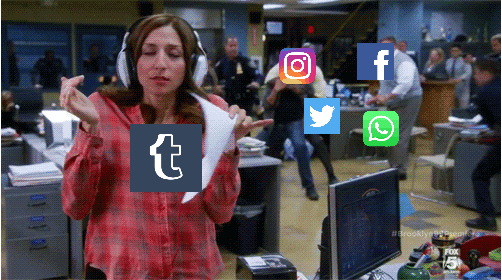
The Landscape of Social Media in China
China's social media environment is dominated by domestic platforms such as WeChat, Weibo, Douyin (the Chinese version of TikTok), and Xiaohongshu. These platforms offer functionalities like their global counterparts but operate under strict government regulations and censorship. The bans on Western platforms like Facebook and YouTube were implemented as part of the "Great Firewall," a mechanism designed to control information flow and safeguard national security.
While these restrictions may serve government objectives, they create a digital divide, limiting access to global platforms for Chinese users and vice versa.

Impact on Chinese Users
Limited Access to Global Perspectives
Chinese users are largely confined to consuming content curated within their domestic ecosystem. This isolation restricts exposure to diverse viewpoints, global news, and cultural exchanges. For instance, while a Twitter user in New York might engage with trending hashtags about global climate initiatives, a Weibo user in Beijing would rely on state-approved narratives.
Reliance on Alternative Tools
Some Chinese users’ resort to Virtual Private Networks (VPNs) to bypass restrictions, accessing platforms like Instagram to follow international influencers or engage with global communities. However, using VPNs is increasingly risky as the government intensifies crackdowns on their usage.
Creative Innovation Within Boundaries
On the flip side, the bans have spurred innovation in the Chinese tech industry. Platforms like WeChat integrate social media, e-commerce, and financial services into a single app, setting a global standard for multifunctional platforms.
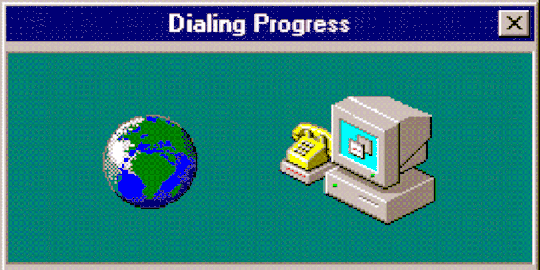
Impact on Global Connections
Cultural Exchange Barriers.
Social media has become a vital tool for cultural diplomacy and international relations. The inability of many Chinese citizens to freely access global platforms hinders their participation in global conversations. For example, during major global events like the Olympics, discussions on platforms like Twitter rarely include direct perspectives from Chinese users.
Challenges for Foreign Businesses
Companies looking to enter the Chinese market must adapt to its domestic platforms and adhere to strict regulations. For instance, brands like Nike and Apple rely heavily on WeChat and Douyin for marketing campaigns, which can limit their reach and creativity compared to global platforms.
Geopolitical Tensions
Social media bans also reflect broader geopolitical divides. The U.S. and other Western nations have criticized China's digital censorship as a barrier to free speech. Conversely, China views its controls as necessary to maintain national sovereignty in the digital age. This dichotomy often exacerbates misunderstandings and mistrust between nations.
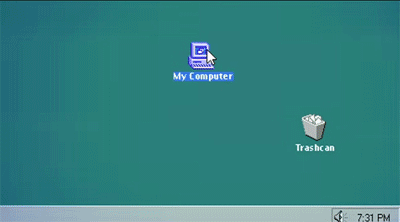
Conclusion
The bans on global social media platforms in China have far-reaching implications, shaping not only the digital experiences of Chinese users but also the nature of global connections. While these restrictions create challenges, they also present opportunities for innovation and collaboration. Understanding these dynamics is crucial as we navigate an increasingly interconnected yet fragmented digital world.
By exploring creative solutions and fostering dialogue, it’s possible to bridge the digital divide and create a more inclusive online environment for all.

References
Chan, C., Dao, A., Hou, J., Jin, T., & Tuong, C. (2011). China’s Great Firewall. Cs.stanford.edu; Stanford University. https://cs.stanford.edu/people/eroberts/cs181/projects/2010-11/FreeExpressionVsSocialCohesion/china_policy.html
Liang, F., Das, V., Kostyuk, N., & Hussain, M. M. (2018). Constructing a Data-Driven Society: China’s Social Credit System as a State Surveillance Infrastructure. Policy & Internet, 10(4), 415–453. https://doi.org/10.1002/poi3.183
Wang, Y. (2020, September 1). In China, the “Great Firewall” Is Changing a Generation. POLITICO. https://www.politico.com/news/magazine/2020/09/01/china-great-firewall-generation-405385
3 notes
·
View notes
Text
Week 10: Gaming & Mental Health: How Social Games Can Be A Safe...
Social gaming is a form of interactive entertainment that emphasizes social interaction among players, often blending gaming with community engagement. It typically involves multiplayer experiences where players can cooperate or compete in real-time, fostering connections and friendships through shared gameplay.
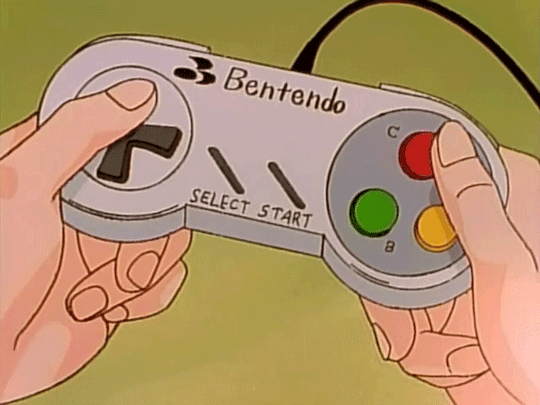
1. Community and Connection
How multiplayer and cooperative games foster connections among players:
Games that build community: Animal Crossing: New Horizons became a haven during the COVID-19 pandemic, allowing people to visit each other's virtual islands and share experiences while physically distant. Similarly, games like Minecraft encourage creativity and collaboration in building shared spaces.
Friendship-building potential: Research has shown that social games provide a platform for people to bond over shared interests, reducing feelings of loneliness. For instance, Among Us encourages teamwork (and fun betrayal!), creating conversations and interactions.
Examples of inclusive and supportive communities:
Discord servers: Many gamers use Discord to connect, and some servers are explicitly designed for mental health support or “chill” gaming environments where toxicity is not tolerated.
Twitch streaming communities: Many streamers create “safe zones” where viewers feel supported, with chat moderators enforcing positive interaction.
2. A Judgment-Free Environment
Self-expression through gaming avatars and identities:
Games allow players to create avatars that represent their ideal selves or something entirely different. This can help people with social anxiety practice interactions in a low-stakes environment. Games like The Sims or World of Warcraft offer expansive customization options that make players feel more in control of their identity.
Escaping real-world pressures:
Casual games like Stardew Valley or Cozy Grove emphasize relaxation over competition, helping players unwind in an environment where they aren’t judged for their performance. These games cultivate mindfulness through repetitive, soothing tasks like farming or crafting.
3. Accessibility to Support
Games with built-in mental health support or partnerships:
Sea of Solitude is a game that explicitly explores themes of loneliness and emotional struggles through its story, encouraging players to reflect on mental health.
Hellblade: Senua’s Sacrifice offers an authentic portrayal of psychosis, developed in collaboration with mental health professionals. It’s both a game and an educational experience.
Platforms offering mental health resources:
Many game-related Discord communities have channels dedicated to mental health discussions and sharing resources.
Some gaming platforms partner with mental health organizations. For example, Fortnite has hosted in-game events like We The People, promoting mental health awareness and social connection.
4. The Role of Game Design
Key features in social games that promote mental health:
Cooperative mechanics: Games like It Takes Two and Overcooked focus on collaboration rather than competition, encouraging teamwork and communication.
Calming aesthetics: Games such as Journey and Flower by Thatgamecompany are designed to evoke tranquility through minimalist visuals and peaceful music.
Empathy-driven narratives: Titles like Life is Strange and Celeste explore deep emotional themes, allowing players to empathize with characters and their challenges, creating a sense of shared understanding.
5. The Dark Side: Addressing Toxicity
The impact of toxic behavior:
While social gaming can be a haven, toxic interactions—such as harassment or bullying—can harm mental health. A study by the Anti-Defamation League found that nearly 60% of online gamers experience harassment.
How companies are combating toxicity:
League of Legends introduced features like “honor rewards” to encourage positive behavior and penalize abusive players.
Overwatch 2 actively monitors voice chats and uses AI to identify and ban toxic players.
Reporting systems and chat moderation are becoming more sophisticated to make gaming communities safer.
6. Future Directions
Gamified mental health apps integrating social elements:
Apps like SuperBetter use game mechanics to help users build resilience and cope with anxiety or depression. Adding multiplayer features to such apps could further enhance their effectiveness.
VR/AR as therapeutic gaming environments:
VR games like Deep use immersive underwater environments and breathing exercises to help players reduce anxiety.
In the future, augmented reality (AR) could create hybrid social spaces that allow players to meet and connect in virtual and physical worlds simultaneously.

Social gaming offers more than just entertainment it can be a vital space for fostering mental well-being. By connecting players in supportive communities, providing opportunities for self-expression, and offering judgment-free environments, social games create safe havens where people can relax, build friendships, and feel a sense of belonging. Thoughtful game design and partnerships with mental health organizations further enhance these benefits, demonstrating the positive role games can play in promoting mental health.
However, it's crucial to acknowledge and address the challenges, such as online toxicity, to ensure these spaces remain inclusive and supportive for everyone. As gaming continues to evolve, the integration of innovative tools like VR/AR and gamified mental health platforms promises even more opportunities to create meaningful and therapeutic experiences.
Ultimately, social gaming is a powerful example of how technology can bring people together and support mental health in creative, impactful ways. Whether you're a seasoned gamer or new to the world of social games, the potential for connection, relaxation, and growth is undeniable. So, pick up a controller or join a virtual world you might just find your safe space.
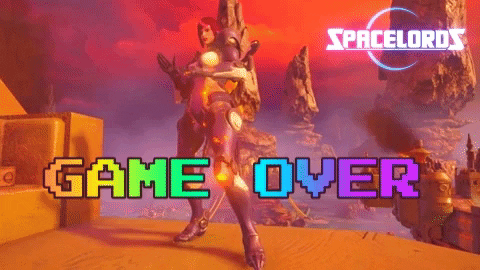
References
Social Gaming: A Usability Perspective. (2016). Spotless.co.uk. https://www.spotless.co.uk/journal/social-gaming-usability
Bernachi, M. (2023). Social Gaming: What It Is, Benefits, and Examples of Platforms. Www.cyberclick.net. https://www.cyberclick.net/numericalblogen/social-gaming-what-it-is-benefits-and-examples-of-platforms
Daily, B. S. (2024, October). Social Gaming: What It Is and Why Everyone Is Talking About It. Social Gaming: What It Is and Why Everyone Is Talking about It - Ball State Daily. https://www.ballstatedaily.com/article/2024/10/social-gaming-what-it-is-and-why-everyone-is-talking-about-it?ct=content_open&cv=cbox_latest
Cyberclick. (n.d.). Social gaming: What it is, benefits, and examples of platforms. Cyberclick. Retrieved November 19, 2024, from https://www.cyberclick.net/numericalblogen/social-gaming-what-it-is-benefits-and-examples-of-platformsLinks to an external site.
Lee, A. (2023, May 5). How the rise of social gaming has impacted consumers’ gaming and spending habits. Digiday. https://digiday.com/marketing/how-the-rise-of-social-gaming-has-impacted-consumers-gaming-and-spending-habits/
2 notes
·
View notes
Text
Week 9: How Toxic Fan Culture on Twitter and Other Platforms Shapes the Fan Experience
In the digital age, social media platforms like Twitter have become vital spaces for fandom communities to connect, share, and celebrate their favourite artists, shows, and franchises. However, the very platforms that foster connection can also breed toxicity, creating hostile environments that challenge what it means to identify as a fan. This post explores the dynamics of toxic fan behaviour online and its impact on both established and emerging fans.

What Is Toxic Fan Culture?
Toxic fan culture refers to behaviours and attitudes within a fandom that are overly aggressive, exclusionary, or hostile. It often manifests as gatekeeping (deciding who qualifies as a “real” fan), cyberbullying, or harassment of other fans or creators. On platforms like Twitter, these behaviours are amplified due to the platform's speed, anonymity, and global reach.
For example, a single negative opinion about a beloved character or a controversial storyline can spark an avalanche of attacks, often targeting the original poster with personal insults or threats. In some cases, these conflicts escalate to public feuds that draw in creators, leading to further division in the community.
Why Does This Happen?
Toxicity in online fandom spaces is fueled by several factors:
Passion and Emotional Investment Fans care deeply about their favorite content, often tying it to their identity. This emotional investment can make them defensive or aggressive when others challenge their perspectives.
Anonymity and Lack of Accountability Social media allows users to hide behind avatars and usernames, reducing the consequences of harmful actions.
Algorithms and Echo Chambers Platforms like Twitter prioritize engagement, often amplifying controversial or heated posts. This creates echo chambers where users only encounter perspectives that reinforce their views, further entrenching toxic behaviors.
Fandom Hierarchies Some fans establish informal hierarchies based on how long they've been in the fandom or how much knowledge or merchandise they have. This can lead to gatekeeping and exclusion of newer or casual fans.
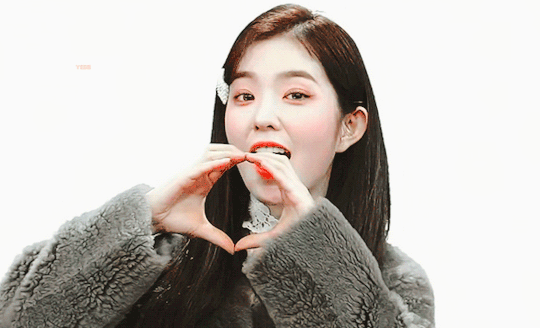
The Impact on Fan Identity
For many, toxic fan spaces can make it difficult to embrace their identity as a fan. Emerging fans may feel intimidated, fearing backlash for expressing opinions or asking questions. Established fans might withdraw from fandom communities entirely, disillusioned by the negativity.
This behavior undermines the very purpose of fandom—to create a shared space for celebration and connection. Instead of fostering dialogue, these toxic environments can create barriers, isolating fans from one another.
Can We Fix Toxic Fan Spaces?
The good news is that change is possible. Here are some strategies to foster healthier fandom communities:
Promote Positivity Amplify positive and constructive voices within the community. Celebrate diverse opinions and encourage open dialogue.
Call Out Toxicity Thoughtfully Address harmful behaviour without escalating conflicts. For instance, respond to gatekeeping by emphasizing inclusivity and shared love for the content.
Set Community Guidelines Creators and moderators can establish clear rules for online engagement, promoting a respectful and welcoming environment.
Take Breaks Sometimes, stepping away from toxic spaces can be the healthiest choice. Seek out smaller, moderated communities or engage with fandom offline.

Conclusion
While toxic fan culture is a growing issue on platforms like Twitter, it doesn’t have to define the fan experience. By acknowledging the problem and actively working toward solutions, fans can reclaim their spaces as inclusive, supportive, and joyful environments.
In the end, fandom should be about celebrating what we love together. Let’s work toward a culture that makes that possible for everyone.

References
Proctor, W., & Kies, B. (2018). Editors’ Introduction: On toxic fan practices and the new culture wars The Toxic Turn? https://eprints.bournemouth.ac.uk/30957/1/on%20toxic%20fan%20practices.pdf
Jenkins, H. (2006) “Introduction: Confessions of an Aca-Fan ” in Fans, Bloggers and Gamers: Exploring Participatory Culture, NYU Press, New York, pp. 1-6
Jenkins, H. & Shrestova, S. (2012) “Up, up and away! The potential of fan activism” in Transformative Works and Cultures, Vol 10 https://doi.org/10.3983/twc.2012.0435
Vinney, C. (2022, January 19). What Is Toxic Fandom? Verywell Mind. https://www.verywellmind.com/what-is-toxic-fandom-5214499
2 notes
·
View notes
Text
Week 7: Social Media and Public Health: A Platform for Dialogue or One-Way Messaging?
Social media has revolutionized the way public health campaigns communicate with the public. Social media refers to online social networking sites and is a broad example of Web 2.0, such as Twitter, YouTube, TikTok, Facebook, Snapchat, Reddit, Instagram, WhatsApp, and blogs. It is a new and ever-changing field. Access to the internet, social media platforms and mobile communications are all tools that can be leveraged to make health information available and accessible. (Kanchan & Gaidhane, 2023). But are these campaigns truly leveraging the interactive potential of these platforms, or are they simply using them as digital megaphones?

The One-Way Messaging Approach
Many public health campaigns still rely on traditional, one-way communication styles. These campaigns are typically centered around disseminating important messages, such as promoting COVID-19 vaccinations or raising awareness about mental health. For example:
The CDC’s Instagram posts during the pandemic often delivered visually appealing infographics and key health tips but rarely engaged directly with audience comments.
Similarly, campaigns like #EatHealthy often feature polished content that informs but doesn’t always invite interaction.
This approach ensures consistent messaging and allows organizations to maintain control over the narrative. However, it risks missing the mark in fostering trust or addressing specific concerns of the target audience, particularly in diverse or skeptical communities.
The Interactive Potential of Social Media
Conversely, campaigns that embrace social media as a platform for dialogue often see greater engagement and impact. Interactive features like polls, live Q&A sessions, and user-generated content can transform a campaign into a two-way conversation. Examples include:
The #ThisIsOurShot campaign, where doctors and nurses answered vaccine-related questions through live streams and short TikTok videos. This approach directly addressed misinformation and empowered users to engage with trusted professionals.
Mental health awareness campaigns like #BellLetsTalk use platforms like Twitter to encourage people to share their stories, creating a sense of community while driving the campaign's message.
These methods invite users to participate, ask questions, and share their perspectives, making them feel heard and valued.

Challenges to Fostering Dialogue
Despite the potential for interaction, creating two-way communication isn’t without its challenges. For one, public health organizations may struggle with the volume of responses and questions, especially during crises like the COVID-19 pandemic. Since the onset of COVID-19, incidents of racism and xenophobia have been occurring globally, especially toward people of East Asian appearance and descent. In response, this article investigates how an online Asian community has utilized social media to engage in cathartic expressions, mutual care, and discursive activism amid the rise of anti-Asian racism and xenophobia during COVID-19 (Abidin & Zeng, 2020). In the era of COVID-19, SAT has developed into a congregational Facebook hub for the Asian diaspora. SAT's 1000+ daily posts from its members have quickly shifted to reflecting on what it means to be "Asian" during the pandemic, from promoting "quarantine trends" (such as homemade dalgona coffees that require the effort of whipped coffee and milk but are Instagram worthy to simulate the café experience; and recommendations of Korean dramas in every genre to soothe the soul) to making fun of Asian mothers' pseudo-scientific anti-COVID remedies.
Additionally, misinformation and trolling can disrupt meaningful conversations.
To mitigate these issues, organizations can use strategies such as:
Employing community managers to monitor and respond to comments.
Partnering with influencers who align with the campaign's goals and can engage directly with their followers.
Providing clear guidelines for respectful dialogue to maintain a positive online environment.
The Sweet Spot: Balancing Information and Engagement
The most effective public health campaigns strike a balance between delivering essential information and fostering meaningful interaction. For example, the World Health Organization (WHO) frequently uses Instagram Stories to post health tips while also utilizing the "Ask Me Anything" feature to respond to followers' queries in real time. This dual approach ensures that their messages are both informative and engaging.

In conclusion, while many public health campaigns on social media remain rooted in one-way communication, the potential for meaningful dialogue is immense. By leveraging the interactive features of these platforms and actively engaging with their audience, public health organizations can not only amplify their messages but also build trust, address concerns, and foster lasting behavioural change.
References
Abidin, C., & Zeng, J. (2020). Feeling Asian Together: Coping With #COVIDRacism on Subtle Asian Traits. Social Media + Society, 6(3), 205630512094822. https://doi.org/10.1177/2056305120948223
Kanchan, S., & Gaidhane, A. (2023). Social Media Role and Its Impact on Public Health: a Narrative Review. Cureus, 15(1), e33737. https://doi.org/10.7759/cureus.33737
Kwai, I. (2018, December 11). How “Subtle Asian Traits” Became a Global Hit. The New York Times. https://www.nytimes.com/2018/12/11/world/australia/subtle-asian-traits-facebook-group.html
2 notes
·
View notes
Text
Is Blogging Still Relevant? I think so..

Ah, blogging. Remember those days when we wrote 1000 word think pieces and hit "publish," thinking we'd change the world one post at a time? Huh it such a good times, right? But here we are in the era of TikTok dances and Instagram reels, where attention spans are shorter than a cat video on loop. In today's digital age, the term "blog" has become a familiar part of our online vocabulary. But what exactly is a blog, and why has it gained such popularity?
A blog is essentially a website or a section of a website where individuals or groups post regularly updated content. These posts, often referred to as articles or entries, can cover a wide range of topics, from personal experiences and opinions to professional insights, tutorials, and even news. Blogs are usually written in an informal, conversational style, making them more approachable than traditional articles or formal writing. Creating a blog is also easier than ever. Platforms like WordPress, Blogger, and Medium provide templates and tools that allow even those without technical skills to set up and maintain a blog. Once established, a blog can be a space where anyone can publish content, share ideas, and even reach a global audience.
Helooo...Why you need to start to think that 'blogging' its actually good!?
Blogging has long been a powerful tool for sharing information and raising awareness on important issues. In an age where information is abundant but attention is limited, blogs offer a unique platform to reach and engage audiences on topics that matter. One of the most powerful ways to raise awareness is through storytelling. Blogs provide the perfect platform for sharing personal experiences, interviews, and testimonials that resonate emotionally with readers. Do you feel restricted while sharing your personal experiences on the blog? Or do you feel comfortable expressing yourself on your blog? You need to know that by writing those blogs, we can humanize ourselves and at the same time, inspire others or readers to feel the same way when they immerse themselves in our storytelling.
Blogging provides the opportunity to share authentic and unfiltered stories in your own voice. Unlike social media platforms, where posts are often limited in length and more focused on visual engagement, blogs allow for thoughtful expression. Sharing personal stories, challenges, and triumphs in a long-form format creates a more intimate space where readers can connect with you on a deeper level.
Blogging can help create a community who is having a same interest with other people too. Comment sections, sharing tools, and forums connected to blog posts allow readers to interact, share their own experiences, and collaborate on solutions. This engagement fosters a sense of collective action and unity around the issue being discussed.

Why do bloggers love coffee so much? Because they need to keep their “content” flowing!
Blogging or Instagram and Tiktok
Rather than competing with TikTok and Instagram, blogging can complement these platforms. Many successful content creators use social media to drive traffic to their blogs, where they offer more detailed information. Social platforms are excellent for quick bursts of engagement, but blogs provide a home base where creators can build a more comprehensive, loyal audience. One of the biggest advantages of blogging is that it gives the creator full control over their content. Bloggers can choose the structure, design, and the length of their posts, which allows for a high degree of creativity and flexibility. Additionally, blogs can be monetized through ads, affiliate marketing, and sponsored posts, making them a viable option for long-term income generation.
While TikTok and Instagram have transformed the way we consume content, blogging remains a cornerstone of digital communication. Instagram, by contrast, is a visually-driven platform that excels at short, punchy content. Its main appeal lies in its ability to showcase images and short videos. Creators can use Instagram’s aesthetic focus to tell stories through photos, filters, and design layouts, making it a popular choice for lifestyle influencers, photographers, and brands. Meanwhile TikTok, one of the fastest-growing platforms today, is all about short-form video content. With TikTok, creators can produce videos that are fun, creative, and engaging, often using music, voiceovers, and special effects. The app’s algorithm tends to favor content discovery, which is why many creators have gone viral overnight. The key to success in today's content-driven world is to integrate blogging with social platforms, combining the viral power of TikTok and Instagram with the deep engagement that only blogs can offer.
You know what is a blogger’s favorite social media platform? Whichever one lets them “post” the most puns!

In conclusion, a blog is a versatile tool that connects people through the written word. Whether it's for personal expression or professional growth, blogging offers an accessible and impactful way to communicate online. With its informal tone and interactive nature, a blog provides both writers and readers a space for connection and conversation.
So yes, in 2024 and beyond, blogging is not only still relevant but it's essential.
References
Corinne (2021). Is blogging dead? The rise of Instagram and TikTok. [online] Skinnedcartree. Available at: https://skinnedcartree.com/2021/04/is-blogging-dead-the-rise-of-instagram-and-tiktok.html.
Davis, R., 2012. Blogging and the future of news. The SAGE handbook of political communication, pp.49-62.
Lou, S. (2024). Blogging vs Instagram: Which One is the Best? [online] A Picturesque Life. Available at: https://apicturesquelife.com/2024/04/11/blogging-vs-instagram/.
Singla, A. (2022). Is Blogging Still Worth It in 2023? (7 Questions Answered!). [online] Master Blogging. Available at: https://masterblogging.com/is-blogging-still-worth-it/.
2 notes
·
View notes
Text
Heloo everyone!!! My name is Nur Hazwani but you can call me Wani. Im in my third year and I am Media and Communication student. I love listening to music, watching kdramas and kpop idol music video (nctzen here hehe) Ohh and I love macaron 🤧
Have a great day!
2 notes
·
View notes